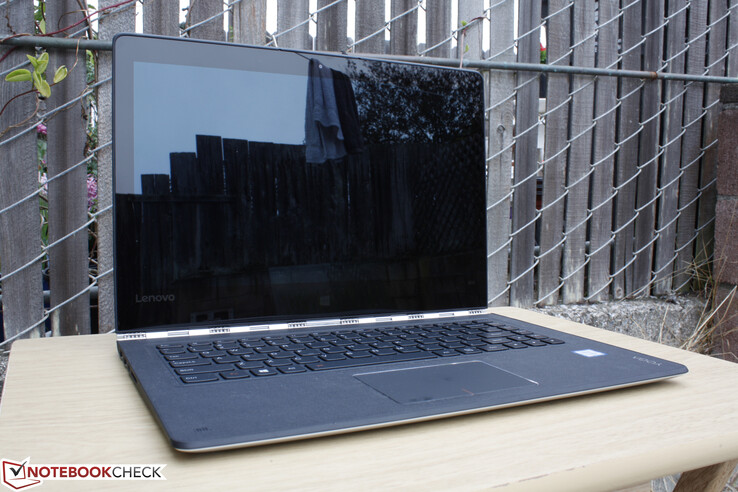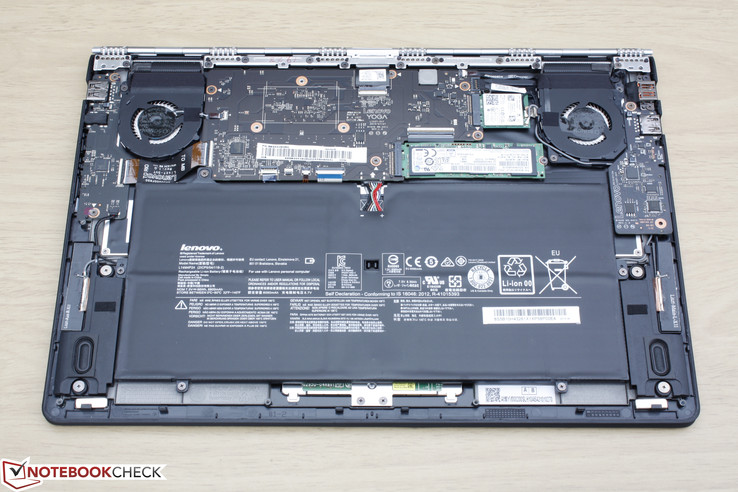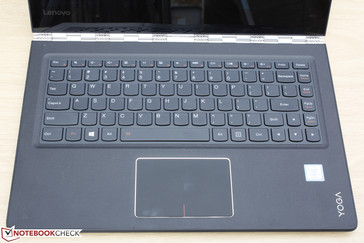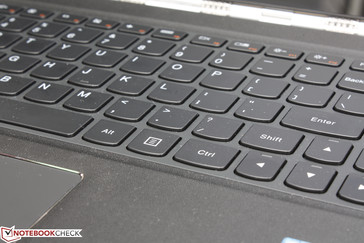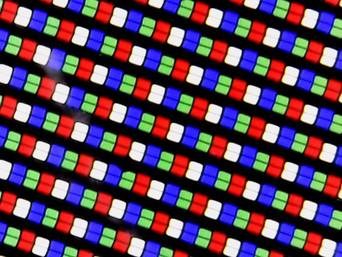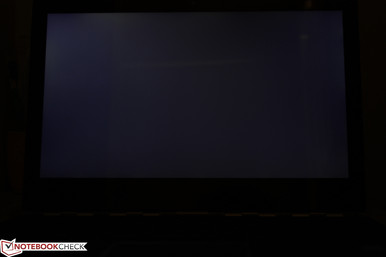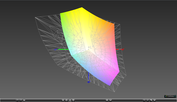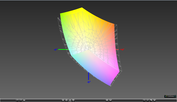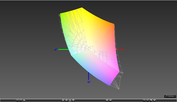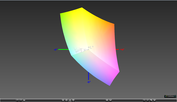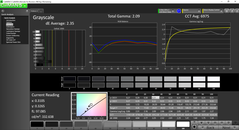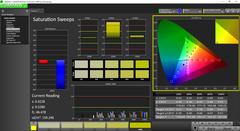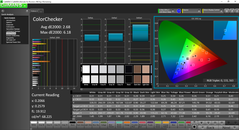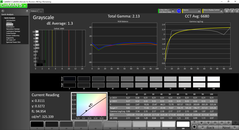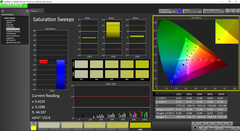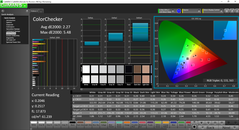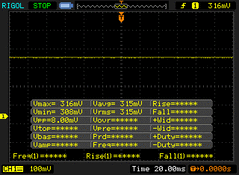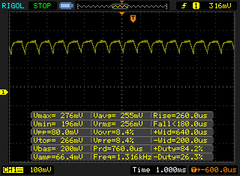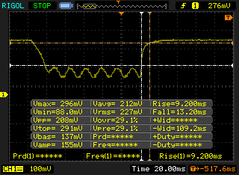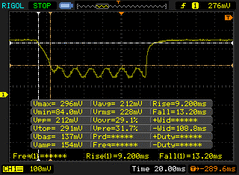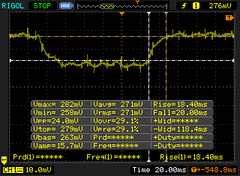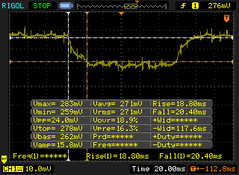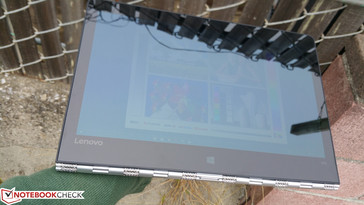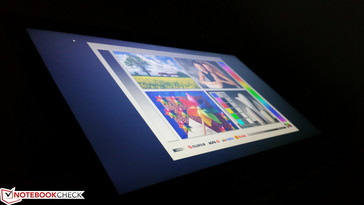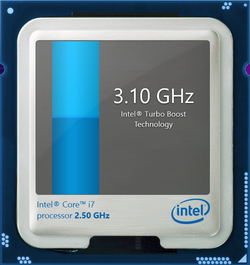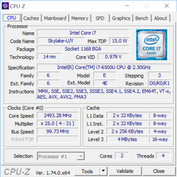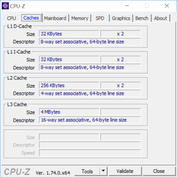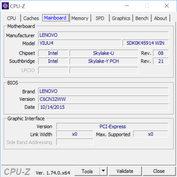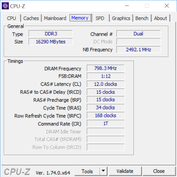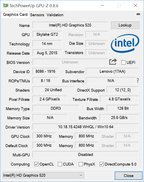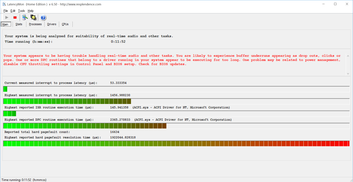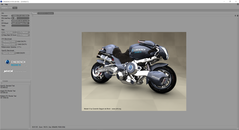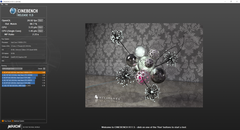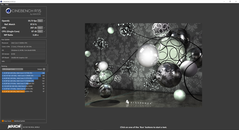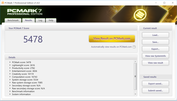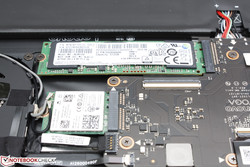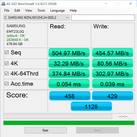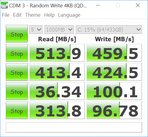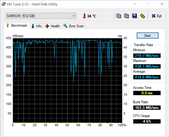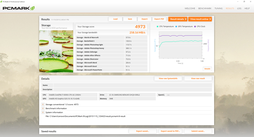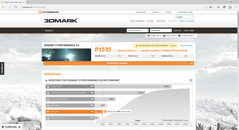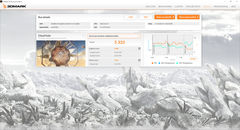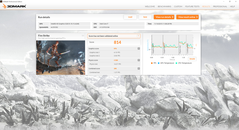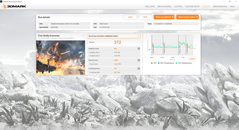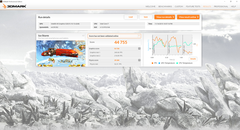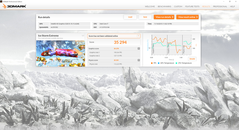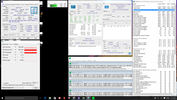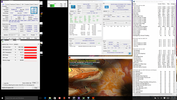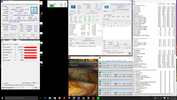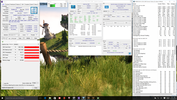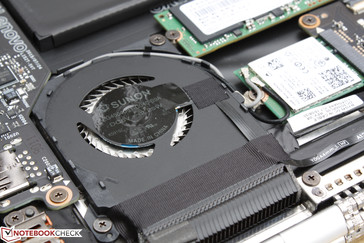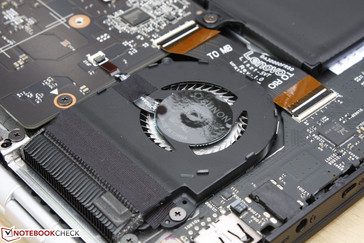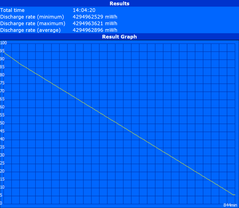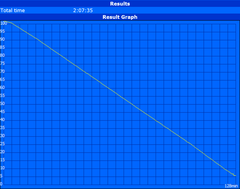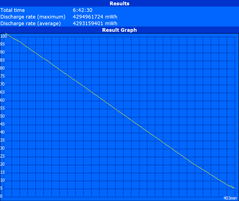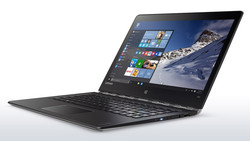Lenovo Yoga 900 13ISK Convertible Review
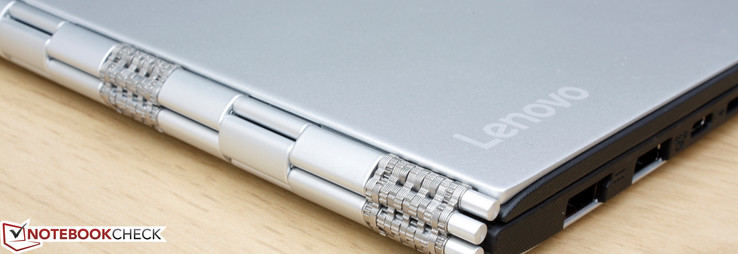
Lenovo has streamlined its growing consumer product families with a new naming scheme that should hopefully be easier for buyers to understand. We recently checked out the Lenovo 100 and 500 with the 700 on its way.
The Lenovo Yoga 900 is the capstone of the refreshed lineup and with it brings about important changes over the previous Yoga 3 Pro. This is Lenovo's fourth generation convertible donning the Yoga moniker that has become synonymous with 360-degree hinges on notebooks. For more information on the series, see our previous reviews on the older models to get an idea on how the series has changed with each iteration.
For this review, let's find out if Lenovo can maintain its lead in the convertible segment for the all-important Holiday time frame.
Case
A quick glance at the Yoga 900 reveals a nearly identical chassis to the Yoga 3 Pro with some notable differences. First, the steel Watchband hinge has returned unscathed and works as great as ever. Its tautness is really no better or worse than the "standard-style" 360-degree hinges, but its design is arguably more attractive and luxurious. The palm rests use a rubberized surface without the dimples as found on the Yoga 3 Pro for a cleaner and leather-like look. The edges and front corners are protected against small bumps by a similar rubberized bumper and the display has been made more rigid with edge-to-edge Gorilla Glass compared to its predecessor. The bumpers also serve to make the notebook more comfortable to handle when in tablet mode.
Aside from the metal hinge and rubber palm rests, the base and outer lid are smooth matte surfaces. Lenovo, however, has not specified whether the materials are plastic or aluminum, but the lid and base are rigid nonetheless with very good resistance to twists and depressions. Pushing down on the keyboard produces no visible warping while pushing down on the center of the outer lid produces only minimal warping. Similarly, the base is resistant to twisting and the lid only slightly less so.
The dimensions of the Yoga 900 are slightly different than the Yoga 3 Pro at 324 x 225 x 14.9 mm vs. 330 x 228 x 12.8 mm. Yes, the notebook is now just over 2 mm thicker than its predecessor as the extra space is required to properly cram in a ULV Core i7 CPU instead of the slower Core M solution. Lenovo still claims it to be the "world's thinnest Intel Core i convertible" weighing just 1.27 kg or roughly 70 grams heavier than our Yoga 3 Pro test model. Despite the marginal increase in size and weight, we still find the Yoga 900 to be very light and easy to handle in both notebook and tablet modes.
True to Lenovo's word, the Yoga 900 is thinner than its 13-inch competitors while providing a more versatile 360-degree hinge. The Asus UX305 comes closest at just one-tenth of a millimeter thicker. In return, the footprint of the Yoga 900 is noticeably larger than the Toshiba Kirabook and Dell XPS 13 while weighing about the same as the XPS 13 (1.27 kg vs. 1.23 kg).
Connectivity
Available ports remain largely unchanged from the Yoga 3 Pro with one notable exception - The mini-HDMI port is now a USB 3.1 Type-C port. There are no indications that this is a Gen. 2 Type-C port (10 Gbps) with Thunderbolt capability, though Lenovo explicitly states that the port is capable of video-out. This is a good way of future-proofing the notebook, but at the cost of more standard mDP or mini-HDMI ports where users are more likely to already have cables for.
We especially like the rotation lock button next to the Lenovo OneKey button on the edge of the notebook. This is much more convenient than disabling rotation through the Windows software as on most other tablets or convertibles. Thus, using the Yoga 900 in tablet mode for presentations or when sharing the display with others is made easier.
Communication
WLAN and Bluetooth 4.2 are provided by a removable Intel 8260 M.2 2230 module with dual-band (2x2) connectivity for theoretical speeds of up to 867 Mbps on 802.11ac. The module supports WiDi, which users may want to consider since the notebook lacks direct HDMI, VGA, or DisplayPort options. There are no other WLAN or GPS/WWAN options on the Yoga 900.
Accessories
There is no dedicated docking port for specialized accessories. Users may want to invest in USB Type-C video adapters since it is the only option for cabled video-out.
Maintenance
The bottom panel is relatively easy to remove with a sharp edge and a T4 Hex screwdriver. The internal battery takes up less space than the one in the Yoga 3 Pro in order to make room for a larger motherboard and cooling system. Only the half-mini PCIe WLAN card and M.2 SSD are removable as the CPU and RAM are on the underside of the motherboard.
Warranty
The standard one-year warranty applies when purchased directly from Lenovo. Unsurprisingly, the manufacturer offers extensive coverage options of up to three years with accidental damage protection and in-home repairs.
Input Devices
Keyboard
We found the keyboard on the Yoga 3 Pro to be a little stingy because of its complete lack of Function keys. Thankfully, Lenovo has heard the complaints and has outfitted the Yoga 900 with a proper six-row keyboard for much easier accessibility.
The actual typing experience remains largely the same. While feedback is solid, travel is very shallow. The keys feel much too light as a result and can take some time to get used to.
The backlight offers two levels of brightness and automatically turns off when the display is flipped at least 190 degrees. The keys and touchpad are both disabled when in this mode, but the keys do not depress.
Touchpad
Surface area is on the small side at just 9 x 6 cm. The touchpad on the Kirabook, for example, is wider at 10.5 x 6 cm. The smooth texture is slightly rubberized to avoid that plastic feel on most cheaper notebooks, so there is a bit of resistance when gliding.
We experienced no major issues when using the touchpad for single or multi-touch inputs. The Synaptics control panel recognizes up to four-finger inputs, but we find that even two-finger inputs can be difficult due to the small surface area available.
The integrated mouse keys are shallow in travel with excellent feedback and auditory response. The pressure required to register a click is just right so that double-clicking does not feel tedious at all.
Display
The QHD (3200 x 1800) glossy touchscreen with Gorilla Glass 4 looks fantastic on the Yoga 900. Its Samsung SDC454A panel name is the first in our database. The subpixel structure includes a dedicated White pixel in addition to the standard RGB that promises deeper colors. Average brightness is closer to 300 nits compared to the Yoga 3 Pro and our own color measurements show excellent accuracy. We can find no hints of the screen-door effect due to the high pixel count, though there is some very slight backlight bleeding near the top corner on the display.
Unfortunately, Lenovo has not improved upon the low contrast on this latest revision. Despite the good colors, dark and gray areas in videos appear slightly muddier than they ought to be with some lost details as a result. Most if not all competing models offer much lower black levels than what the Yoga 900 is capable of.
| |||||||||||||||||||||||||
Brightness Distribution: 88 %
Center on Battery: 319.8 cd/m²
Contrast: 383:1 (Black: 0.835 cd/m²)
ΔE Color 2.68 | 0.5-29.43 Ø5
ΔE Greyscale 2.35 | 0.57-98 Ø5.3
88% sRGB (Argyll 1.6.3 3D)
57% AdobeRGB 1998 (Argyll 1.6.3 3D)
64.9% AdobeRGB 1998 (Argyll 2.2.0 3D)
88.7% sRGB (Argyll 2.2.0 3D)
63.2% Display P3 (Argyll 2.2.0 3D)
Gamma: 2.09
| Lenovo Yoga 900-13ISK 80MK 3200x1800 | Apple MacBook Air 13 inch 2015-03 1440x900 | Asus Zenbook UX305LA-FC012H 1920x1080 | Microsoft Surface Book Core i5 3000x2000 | Dell XPS 13-9350 1920x1080 | Toshiba KIRA-10D 1920x1080 | HP Spectre 13-4001ng x360 2560x1440 | |
|---|---|---|---|---|---|---|---|
| Display | -35% | 1% | 7% | -28% | 10% | 4% | |
| Display P3 Coverage | 63.2 | 40.1 -37% | 63.9 1% | 67 6% | 44.53 -30% | 69.1 9% | 67.1 6% |
| sRGB Coverage | 88.7 | 59.8 -33% | 91.6 3% | 95.8 8% | 66.8 -25% | 98.2 11% | 91.4 3% |
| AdobeRGB 1998 Coverage | 64.9 | 41.51 -36% | 65 0% | 68.9 6% | 45.97 -29% | 71 9% | 66.8 3% |
| Response Times | -36% | ||||||
| Response Time Grey 50% / Grey 80% * | 38.8 ? | 48.4 ? -25% | |||||
| Response Time Black / White * | 22.4 ? | 32.8 ? -46% | |||||
| PWM Frequency | 1316 | ||||||
| Screen | 0% | 14% | 60% | 13% | 38% | -31% | |
| Brightness middle | 319.8 | 329 3% | 349 9% | 430.9 35% | 277.5 -13% | 334 4% | 324 1% |
| Brightness | 302 | 310 3% | 338 12% | 410 36% | 276 -9% | 316 5% | 315 4% |
| Brightness Distribution | 88 | 82 -7% | 87 -1% | 93 6% | 88 0% | 92 5% | 80 -9% |
| Black Level * | 0.835 | 0.405 51% | 0.25 70% | 0.254 70% | 0.191 77% | 0.29 65% | 0.59 29% |
| Contrast | 383 | 812 112% | 1396 264% | 1696 343% | 1453 279% | 1152 201% | 549 43% |
| Colorchecker dE 2000 * | 2.68 | 3.96 -48% | 5.49 -105% | 2.06 23% | 4.88 -82% | 2.27 15% | 5.69 -112% |
| Greyscale dE 2000 * | 2.35 | 3.51 -49% | 5.43 -131% | 2.22 6% | 4.26 -81% | 2.47 -5% | 8.02 -241% |
| Gamma | 2.09 105% | 3.83 57% | 2.17 101% | 2.13 103% | 2.59 85% | 2.36 93% | 2.3 96% |
| CCT | 6975 93% | 6711 97% | 7055 92% | 6520 100% | 6562 99% | 6872 95% | 6398 102% |
| Color Space (Percent of AdobeRGB 1998) | 57 | 38.4 -33% | 60 5% | 64 12% | 41.6 -27% | 64 12% | 59 4% |
| Color Space (Percent of sRGB) | 88 | 59.8 -32% | 92 5% | 96 9% | 65.79 -25% | 91 3% | |
| Colorchecker dE 2000 max. * | 7.51 | ||||||
| Total Average (Program / Settings) | -18% /
-9% | 8% /
11% | 10% /
35% | -8% /
3% | 24% /
30% | -14% /
-22% |
* ... smaller is better
Color space coverage is very good at 88 percent and 57 percent of the sRGB and AdobeRGB standards, respectively. This is higher than the 1080p XPS 13 InfinityEdge, yet lower than the Toshiba Kira-10D and Microsoft Surface Book. This means that the Yoga 900 is able to provide deeper and more accurate colors that are a step above most cheaper Ultrabooks, yet a few steps below costlier mobile workstations. For most users, however, this will have little significance during day-to-day use.
Further analyses with an X-Rite spectrophotometer reveal very accurate colors and grayscale out-of-the-box. Colors are even more accurate than on the MacBook Air 13 2015 and Dell XPS 13 InfinityEdge before any calibration attempts. Note that colors become less accurate the higher the saturation level, which suggests imperfect sRGB coverage. Orange and Yellow colors are represented less accurately than others on the Yoga 900.
Photosensor measurements reveal no use of pulse-width modulation until the brightness setting is reduced to 50 percent or lower. Even so, the frequency is far above the 250 Hz threshold that is considered the maximum for sensitive eyes and nearly all users will not notice any flickering if on lower brightness settings.
Response times are roughly 9 ms and 19 ms from black-to-white and gray-to-gray, respectively.
Outdoor usability is not bad as the convertible is lightweight, but visibility is only average at best. The backlight is not powerful enough to overcome glare on an overcast day and doesn't fare any better when under direct sunlight. Luckily, the wide viewing angles help somewhat in reducing glare as much as possible if working under shade is not an option.
Viewing angles are excellent due the underlying IPS panel. Colors do not shift dramatically if viewing from extreme angles, though contrast changes slightly with black areas appearing more gray than they should be.
Performance
Our Yoga 900 test unit is equipped with a dual-core i7-6500U and integrated HD 520 graphics. The only other CPU configuration thus far is the lower-end Core i5-6200U. The ULV 2.5 GHz i7-6500U is rated for a Turbo Boost of up to 3.0 GHz to 3.1 GHz depending on the number of threads. If idling on Power Saver mode, the CPU and GPU can run as low as 500 MHz and 300/800 MHz core/memory, respectively. The system carries no dedicated GPU options.
RAM can be configured with 8 GB up to 16 GB in dual-channel mode. LatencyMon reveals buffer underruns even with WLAN disabled. The source is likely from at least one of the many pre-installed services and tools from Lenovo.
Processor
CineBench benchmarks rank the Yoga 900 slightly below other systems sporting the same i7-6500U CPU. The similarly equipped Acer Aspire VN7-572G, for example, is over 10 percent faster in multi-threaded tasks. This suggests performance throttling when under demanding loads, which we are able to replicate in our Stress Test section.
Despite the lower-than-expected CPU performance, the i7-6500U in the Lenovo is still at least 10 to 20 percent ahead of the Core i5-4300U and i5-4200U that were so common on earlier Ultrabooks.
Note that our single-core performance score for CineBench R15 is very low at just 87 points. This is due to the throttling CPU from running benchmarks sequentially with little rest in between.
More technical information and benchmarks on the i7-6500U can be found on our dedicated CPU page here.
| Cinebench R11.5 | |
| CPU Single 64Bit (sort by value) | |
| Lenovo Yoga 900-13ISK 80MK | |
| Acer Aspire VN7-572G-72L0 | |
| Acer Aspire VN7-791G-79GT | |
| Lenovo E50-80 80JD973CPB | |
| Dell Latitude 14 7414 Rugged Extreme | |
| Lenovo IdeaPad Z40-59422614 | |
| Toshiba Tecra A50-C1510W10 | |
| CPU Multi 64Bit (sort by value) | |
| Lenovo Yoga 900-13ISK 80MK | |
| Acer Aspire VN7-572G-72L0 | |
| Acer Aspire VN7-791G-79GT | |
| Lenovo E50-80 80JD973CPB | |
| Dell Latitude 14 7414 Rugged Extreme | |
| Lenovo IdeaPad Z40-59422614 | |
| Toshiba Tecra A50-C1510W10 | |
| Cinebench R15 | |
| CPU Single 64Bit (sort by value) | |
| Lenovo Yoga 900-13ISK 80MK | |
| Acer Aspire VN7-572G-72L0 | |
| Acer Aspire VN7-791G-79GT | |
| Lenovo E50-80 80JD973CPB | |
| Dell Latitude 14 7414 Rugged Extreme | |
| Lenovo IdeaPad Z40-59422614 | |
| Toshiba Tecra A50-C1510W10 | |
| CPU Multi 64Bit (sort by value) | |
| Lenovo Yoga 900-13ISK 80MK | |
| Acer Aspire VN7-572G-72L0 | |
| Acer Aspire VN7-791G-79GT | |
| Lenovo E50-80 80JD973CPB | |
| Dell Latitude 14 7414 Rugged Extreme | |
| Lenovo IdeaPad Z40-59422614 | |
| Toshiba Tecra A50-C1510W10 | |
| wPrime 2.10 - 1024m (sort by value) | |
| Lenovo Yoga 900-13ISK 80MK | |
| Acer Aspire VN7-572G-72L0 | |
| Acer Aspire VN7-791G-79GT | |
| Lenovo E50-80 80JD973CPB | |
| Dell Latitude 14 7414 Rugged Extreme | |
| Lenovo IdeaPad Z40-59422614 | |
| Toshiba Tecra A50-C1510W10 | |
| Super Pi Mod 1.5 XS 32M - 32M (sort by value) | |
| Lenovo Yoga 900-13ISK 80MK | |
| Acer Aspire VN7-572G-72L0 | |
| Acer Aspire VN7-791G-79GT | |
| Lenovo E50-80 80JD973CPB | |
| Dell Latitude 14 7414 Rugged Extreme | |
| Lenovo IdeaPad Z40-59422614 | |
| Toshiba Tecra A50-C1510W10 | |
* ... smaller is better
System Performance
PCMark 7 ranks our Lenovo very highly (5478 points) next to powerful systems like the older Alienware 17 (5464 points) and the newer 2015 MacBook Pro Retina 15 (5480 points). This is mostly due to the fast M.2 SSD in our equipped test unit. Otherwise, PCMark 8 scores are right where the majority of our test models lie.
Subjectively, the system OS responds fluidly and without major delays. We experienced no noticeable software-related issues during our time with the unit.
| PCMark 7 Score | 5478 points | |
| PCMark 8 Home Score Accelerated v2 | 2837 points | |
| PCMark 8 Creative Score Accelerated v2 | 3709 points | |
| PCMark 8 Work Score Accelerated v2 | 3863 points | |
Help | ||
Storage Devices
There is only one storage bay available in the form of an M.2 slot. Our test model is equipped with a 512 GB Samsung MZNLN512HCJH-000L2 SSD. Sequential read and write rates are very consistent and rival other high-end SSDs such as the Samsung SSD 850 EVO. NVMe drives can provide at least twice the performance such as on the Surface Book.
The lowest Yoga 900 configuration carries a sizable 256 GB SSD, so storage space is less of a concern especially since the drive can be easily upgraded.
See our growing benchmark list of SSDs and HDDs for more comparisons.
GPU Performance
Raw graphics performance is 20 to 30 percent ahead of the older HD 4000 and HD 4600 according to 3DMark 2013. The gap is wider when running 3DMark 11 at 50 to 60 percent. Nonetheless, Intel's Iris Pro Graphics 5200 and low-end Nvidia GPUs like the GeForce 930M hold a clear advantage over the Yoga 900 by 40 to 60 percent.
More technical information and benchmarks on the HD Graphics 520 can be found on our dedicated GPU page here.
| 3DMark 11 Performance | 1535 points | |
| 3DMark Ice Storm Standard Score | 44755 points | |
| 3DMark Cloud Gate Standard Score | 5333 points | |
| 3DMark Fire Strike Score | 814 points | |
| 3DMark Fire Strike Extreme Score | 372 points | |
Help | ||
| 3DMark | |
| Fire Strike Extreme Graphics (sort by value) | |
| Lenovo Yoga 900-13ISK 80MK | |
| Toshiba Satellite U840T-101 | |
| 1920x1080 Fire Strike Graphics (sort by value) | |
| Lenovo Yoga 900-13ISK 80MK | |
| MSI GS30 Shadow | |
| Asus Asuspro Essential P751JF-T2007G | |
| Lenovo ThinkPad Edge E540 20C60041 | |
| Toshiba Satellite U840T-101 | |
| 1280x720 Cloud Gate Standard Graphics (sort by value) | |
| Lenovo Yoga 900-13ISK 80MK | |
| MSI GS30 Shadow | |
| Asus Asuspro Essential P751JF-T2007G | |
| Lenovo ThinkPad Edge E540 20C60041 | |
| Toshiba Satellite U840T-101 | |
Gaming Performance
Less demanding titles like Starcraft 2 or LoL will play well on Medium-High settings albeit at much lower resolutions than the native 3200 x 1800. 1080p is pushing it unless if on lower graphical settings, so we recommend gaming on 720p for the smoothest experience. More modern titles like MGS V play decently on low settings.
| low | med. | high | ultra | |
| StarCraft II: Heart of the Swarm (2013) | 175.6 | 58.5 | 33.7 | 18.1 |
| Metal Gear Solid V (2015) | 43.3 | 29.7 | 11.3 |
Stress Test
We stress the system with synthetic benchmarks to test for potential stability and throttling issues. With Prime95 active to stress the CPU, its Turbo Boost can be seen slowly dropping and stabilizing at 2.7 GHz, or just 200 MHz above the base clock rate or 300 MHz below the 3.0 GHz maximum rated for the i7-6500U. FurMark stress shows the integrated GPU stabilizing in the 900 MHz range. The GPU maintains a clock rate in the 800 MHz range when both Prime95 and FurMark are running, but the CPU will throttle to just 1.4 GHz under such loads.
When running Unigine Heaven, the GPU is able to maintain higher Boost rates at up to 1000 MHz. The CPU, however, throttles to just 1.6 GHz. It's clear that the Yoga 900 has a bias towards the integrated GPU when power or temperature demands become high. Lenovo appears to have also capped the core temperature to not go above 70 C under normal circumstances.
Running on battery power will have no effect on GPU performance, but will impact CPU performance even further. A 3DMark 11 run on battery power returns Physics and Graphics scores of 3493 and 1354 points, respectively, compared to 3943 and 1382 points when connected to mains.
| CPU Clock (GHz) | GPU Clock (MHz) | Maximum Core Temperature (C) | |
Prime95 Stress |
2.7 | -- | ~70 |
FurMark Stress |
-- | 850 - 900 | ~65 |
Prime95 + FurMark Stress |
1.4 | 800 - 850 | ~70 |
Unigine Heaven Stress |
1.6 | 950 - 1000 | ~60 |
Emissions
System Noise
Unlike the Yoga 3 Pro, the Yoga 900 utilizes twin 35 mm metal alloy fans and two heat sinks instead of just a single fan and heat sink. The ventilation grilles are cleverly hidden on the rear edge of the notebook underneath the watchband hinge. The changes were necessitated by the move from a 1.1 GHz Core M-5Y70 to the much more powerful 2.5 GHz Core i7-6500U. Many Ultrabooks with integrated graphics like the Yoga 900 will typically have one internal fan only as there is no dedicated GPU, so Lenovo has doubled down on the cooling system this time around to promise 20 percent better cooling over the previous generation.
Has fan noise suffered as a result? The Yoga 900 indeed runs louder than the Yoga 3 Pro, though infrequently and only when the processing loads demand it. The fans are essentially silent if word processing or browsing at around 30 dB(A). If on the High Performance profile, however, the fans begin to pulsate more frequently in the 31 to 32 dB(A) range. Gaming will cause fan noise to settle in the 33 to 34 dB(A) range, so the system is almost always below 35 dB(A) even during higher loads. Unrealistic maximum load from Prime95 or FurMark can bump noise up to the 38 dB(A) range.
Compared to notebooks like the Spectre 13 x360, Apple MacBook Air 13, or Zenbook UX305LA, the Yoga 900 is generally quieter as the fans never reach 40 dB(A) or higher even under the most extreme of processing loads. The system is quiet enough where users can get away with playing games in a library without bothering others nearby.
Noise Level
| Idle |
| 29.7 / 29.8 / 30 dB(A) |
| Load |
| 32 / 38.5 dB(A) |
 | ||
30 dB silent 40 dB(A) audible 50 dB(A) loud |
||
min: | ||
Temperature
While fan noise is louder than its immediate predecessor, surface temperatures have noticeably improved. A hot spot is almost indiscernable when the system is idling with cool temperatures all around. This puts the Lenovo in the same ballpark as competing 13-inch notebooks like the MacBook Air 13, Zenbook UX305LA, and the new XPS 13 InfinityEdge.
When under maximum load, much of the waste heat is concentrated towards the rear where it can be as warm as 37 C. The aforementioned 13-inch notebooks above all reach well over 40 C under similar conditions. The keyboard warms up noticeably as well, though fortunately not to uncomfortable levels on the Lenovo. In short, the temperature gradient is not as steep on the Yoga 900 and should never be bothersome during use on the desk or on the lap.
(+) The maximum temperature on the upper side is 37.4 °C / 99 F, compared to the average of 35.3 °C / 96 F, ranging from 19.6 to 55.7 °C for the class Convertible.
(+) The bottom heats up to a maximum of 36.4 °C / 98 F, compared to the average of 36.8 °C / 98 F
(+) In idle usage, the average temperature for the upper side is 23.4 °C / 74 F, compared to the device average of 30.2 °C / 86 F.
(+) The palmrests and touchpad are cooler than skin temperature with a maximum of 26.6 °C / 79.9 F and are therefore cool to the touch.
(±) The average temperature of the palmrest area of similar devices was 28.1 °C / 82.6 F (+1.5 °C / 2.7 F).
Speakers
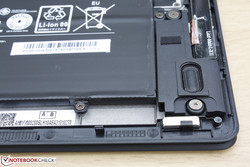
Sound quality from the stereo speakers is good and clear no matter the volume setting. We can notice no static during music playback. Bass is severely lacking, so sounds have a narrow range with a "tin can" quality to them. The internal speakers suffice for the occasional music and video. Otherwise, we recommend earphones for movies and longer sessions.
Battery Life
The non-removable 66 Wh battery pack is larger in capacity compared to many of its 13-inch competitors. Nonetheless, battery life is not any better at under 7 hours of constant WLAN use at 150 nit brightness (setting 75/100). At worst, users will get 2 hours of use on maximum display brightness and CPU usage. Compared to the Yoga 3 Pro, battery life is roughly an hour longer under our WLAN conditions. Lenovo promises up to 9 hours of video playback on a brightness setting of 200 nits and with WiFi disabled.
Recharging the battery from empty to full can take up to 5 hours. The charging port doubles as a USB 2.0 port, which may explain the slow charging time. It's unfortunate that the Yoga 900 cannot be charged via the USB Type-C port.
| Lenovo Yoga 900-13ISK 80MK 66 Wh | Apple MacBook Air 13 inch 2015-03 54 Wh | Asus Zenbook UX305LA-FC012H 56 Wh | Microsoft Surface Book Core i5 69 Wh | Dell XPS 13-9350 56 Wh | Toshiba KIRA-10D 52 Wh | HP Spectre 13-4001ng x360 56 Wh | |
|---|---|---|---|---|---|---|---|
| Battery Runtime | 39% | 33% | 16% | 7% | 33% | 33% | |
| Reader / Idle | 844 | 1572 86% | 1469 74% | 1070 27% | 782 -7% | 1399 66% | 1223 45% |
| WiFi v1.3 | 403 | 620 54% | 569 41% | 402 0% | 451 12% | 518 29% | 542 34% |
| Load | 128 | 97 -24% | 108 -16% | 153 20% | 150 17% | 135 5% | 154 20% |
Pros
Cons
Verdict
Is the new Yoga 900 better than the Yoga 3 Pro? The answer is a resounding yes, though not quite the home run the manufacturer would want you to believe. The convertible is slightly thicker and heavier and display contrast has not been improved. Battery life is nothing special for its size class and both the shallow keys and small touchpad will take some time to become accustomed to. The lack of a common dedicated video-out port will certainly irk users who rely on external monitors on-the-go. Finally, the CPU throttling that was present on the Yoga 3 Pro has found its way onto the Yoga 900 seemingly unaddressed despite the larger cooling solution.
Even with the drawbacks in mind, the Yoga 900 is still an outstanding notebook that cements Lenovo's position at the top of the convertible - not detachable - category. Comparatively, competing models with 360-degree hinges like the Spectre 13 x360 offer more connectivity features for the same screen size, but is so much heavier to the point where tablet mode is comparatively uncomfortable.
If you find the notebook mode and tablet mode of equal interest, then the Yoga 900 is a recommended buy. Otherwise, dedicated Ultrabooks like the Kirabook or Zenbook UX305 can offer longer battery life and higher display contrast. If the tablet mode is more appealing instead, then the Surface Pro 4 with Type Cover is the more comfortable alternative.
The Yoga 900 is a small step in the right direction from the Yoga 3 Pro. Its lightweight and thin design makes it one of the better convertibles available. Otherwise, the system feels barebones and offers less connectivity features than a dedicated Ultrabook.
Lenovo Yoga 900-13ISK 80MK
-
03/15/2016 v5(old)
Allen Ngo


 Deutsch
Deutsch English
English Español
Español Français
Français Italiano
Italiano Nederlands
Nederlands Polski
Polski Português
Português Русский
Русский Türkçe
Türkçe Svenska
Svenska Chinese
Chinese Magyar
Magyar